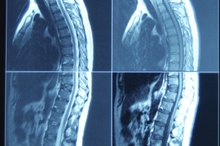Inversion Dizziness
Inversion is when you hang upside down or are placed in an upside down position. You can use an inversion table or device to relieve back pain and decompress the spine. When upside down, your body has less gravitational pressure against the nerves and disks in your back and neck. While relaxing, if you are hanging upside down, you may experience a rush of blood to your head that can lead to dizziness or vertigo.
If you are experiencing serious medical symptoms, seek emergency treatment immediately.
Causes
If using an inversion table for relaxation or a medical condition, you want to get the most out of your experience each time you hang upside down. When you begin to transition from being in an upward position and lay back to invert, the blood rushes to your head from your lower extremities. This feeling can be unpleasant and is referred to as a head rush. It can cause an extreme amount of pressure and discomfort as well as dizziness, explains Energy Center.
- If using an inversion table for relaxation or a medical condition, you want to get the most out of your experience each time you hang upside down.
Types
How Hanging Upside Down Affects the Body
Learn More
You can invert your body in several ways. One method is by using an inversion machine. This machine can be bought at a health and fitness store or used at your local gym. In a standing or upright position, you lock your ankles to the brace of the table. Lying flat on your back, you gently push yourself backward until you reach the desired angle. You can hold yourself there with the help of side rails or the floor. The Yoga Journal suggests utilizing inversion poses, such as a handstand, feathered peacock pose and supported shoulder stand to also practice inversion 2.
- You can invert your body in several ways.
- In a standing or upright position, you lock your ankles to the brace of the table.
Techniques
It is important when first starting to invert your body to gradually start off at a slight angle and then work your way to a full inversion -- this will help prevent sudden dizziness and feelings of unsteadiness. Energy Center explains that you should begin with getting used to the inverter table by tilting back to a 20 to 30 degree angle to start. Keep these increments small and under a few minutes until your body gets used to the feeling. Increase your inversion up to 60 degrees and then 90 degrees until you are able to withstand the effects.
- It is important when first starting to invert your body to gradually start off at a slight angle and then work your way to a full inversion -- this will help prevent sudden dizziness and feelings of unsteadiness.
Precaution
Deep Breathing to Reduce Dizziness
Learn More
People practice inversion to reduce an aching back, stretch their muscles and align their spine. Taking each inversion slow minimizes your risk for dizziness. To feel better during and after an inversion take a few precautions to prevent getting hurt. If using a table, be sure the ankle straps are locked and secure – you do not want your feet slipping through. Wear comfortable socks to avoid the straps from irritating the skin. If practicing on the floor, use a blanket or exercise mat, a pillow and a solid structure to lean against.
- People practice inversion to reduce an aching back, stretch their muscles and align their spine.
- If practicing on the floor, use a blanket or exercise mat, a pillow and a solid structure to lean against.
Warning
When you hang or support yourself upside down your blood pressure can increase. If your hypertension is being controlled by medication, you can ease into inversions slowly starting with positions where the heart is slightly above the head; and work your way up over a period of months to full inversions, where the heart is completely above your head. If you're not on medication for high blood pressure, do not invert yourself 3. If you have cardiovascular disease, hypertension or glaucoma, seek approval from your physician before proceeding.
- When you hang or support yourself upside down your blood pressure can increase.
- If your hypertension is being controlled by medication, you can ease into inversions slowly starting with positions where the heart is slightly above the head; and work your way up over a period of months to full inversions, where the heart is completely above your head.
Related Articles
References
- Energy Center: Inversion Concerns and Techniques
- Yoga Journal: Inversion Poses
- Yoga Journal: High Blood Pressure and Inversions
- Chronic Back Pain. Health Policy Institute. https://hpi.georgetown.edu/backpain/. Published February 13, 2019.
- Wegner I, Widyahening IS, Van tulder MW, et al. Traction for low-back pain with or without sciatica. Cochrane Database Syst Rev. 2013;(8):CD003010. doi:10.1002/14651858.CD003010.pub5
- McMonnies CW. Intraocular pressure and glaucoma: Is physical exercise beneficial or a risk?. J Optom. 2016;9(3):139–147. doi:10.1016/j.optom.2015.12.001
- Chronic Back Pain. Health Policy Institute. Published February 13, 2019.
- Kong L, Tian W, Cao P, Wang H, Zhang B, Shen Y. Predictive factors associated with neck pain in patients with cervical disc degeneration: A cross-sectional study focusing on Modic changes. Medicine (Baltimore). 2017;96(43):e8447. doi:10.1097/MD.0000000000008447
Writer Bio
Julie Boehlke is a seasoned copywriter and content creator based in the Great Lakes state. She is a member of the Society of Professional Journalists. Boehlke has more than 10 years of professional writing experience on topics such as health and wellness, green living, gardening, genealogy, finances, relationships, world travel, golf, outdoors and interior decorating. She has also worked in geriatrics and hospice care.








